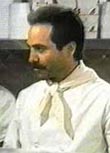|
|
 
|
|
Author
|
Topic: 3D Films: On The Decline, Or Stronger Than Ever?
|
System Notices
Forum Watchdog / Soup Nazi

Posts: 215
Registered: Apr 2004
|
 posted 07-27-2011 11:46 AM
posted 07-27-2011 11:46 AM


3D Films: On The Decline, Or Stronger Than Ever?
Source: huffingtonpost.com
quote:
At a Comic-Con panel last week for the upcoming big-budget sci-fi caper "Prometheus," director Ridley Scott made a bold statement.
Scott, who has given us some of the biggest hits of the past thirty years, announced that he would never work without 3D technology again, "even for small dialogue scenes," for the remainder of his career.
Though we all know small dialogue scenes are made better when things are flying at our faces at 100 miles per hour, Scott is not alone in his embracing of the technology. Other beloved directors have made similar statements recently. Just last year, Martin Scorsese said that his next film, "The Adventures of Hugo Cabret," would be shot in 3D, and around the same time, he also suggested that smaller, more dramatic films should be shot using the now-ubiquitous technology. Because, why not?
"We see in depth, for the most part," Scorsese said in 2010. "We go to the theater -- it's in depth. Why couldn't a film like Precious be in 3D? It should be."
As the number of 3D-capable theaters rises exponentially year after year, ticket prices increase as well, and more and more 3D films are going into production. Since 2008, the number of 3D films being put out has more than doubled each year. But at what cost? And are the studios actually benefiting?
Director James Cameron -- whose "Avatar" is the highest-grossing film of all time and who many blame/credit with the onslaught of 3D films in recent years -- has warned against using 3D technology in the wrong ways. That extra D, he said, should be used sparingly -- not as a last ditch effort to drum up extra studio cash.
"You've got people quickly converting movies from 2D to 3D, which is not what we did," he told Deadline last year. "They're expecting the same result, when in fact they will probably work against the adoption of 3D because they'll be putting out an inferior product."
And, indeed, American audiences are turning away. BTIG Research reported that only 45 percent of ticket sales for the recent "Kung Fu Panda 2" came from the 3D presentation. This is the lowest 3D box office share since "Despicable Me" in summer 2010, which showed on fewer 3D screens than "Panda 2."
The 3D box office for the newest "Pirates of the Caribbean" film also fell week-to week, from 46 percent in its opening week, to 44 percent the second week. Entertainment Weekly noted that these returns mark a dramatically sharp percentage drop from other "3-D event films" like Tim Burton's "Alice in Wonderland" and last winter's "Tron: Legacy."
And for the newest "Harry Potter" film? Only 34 percent of ticket buyers chose to go the 3D route, BTIG reported, with the rest opting for the good ol' fashioned 2D.
"The audience has spoken, and they have spoken really loudly," Dreamworks executive Jeffrey Katzenberg told the Hollywood Reporter. Whereas a year and a half ago, there was "genuine excitement" about the new 3D films, he said, the technology is in the midst of its "terrible twos." The newest batch of lazily slapped together presentations, he said, have undermined audience expectations, and represent squandered opportunities for Hollywood.
Roger Ebert has also repeatedly knocked 3D technology, even titling one of his articles for Newsweek: "Why I Hate 3D (And You Should Too)." He wrote that 3D tends to add nothing to the movie-going experience aside from "nausea and headaches" and usually serves as more of a distraction than anything else.
"I'm not opposed to 3-D as an option," Ebert wrote. "I'm opposed to it as a way of life for Hollywood."
Actor Will Arnett went a step further in a live episode of Marc Maron's WTF podcast a couple weeks ago. "Is it just me," he asked, "Or does 3-D suck?"
"Yeah, what's the best thing that happens?" Maron replied. "You go, woah! And lean back a little bit. That's all."
Perhaps Hollywood could take a cue from the famed German director, Werner Herzog, whose recent exploration of the Chauvet Cave in France, "Cave of Forgotten Dreams," used the technology for something other than explosions or talking owls.
Writing for the Atlantic, Leah Carroll called Herzog's use of 3D to illuminate the secrets of the cave "a stroke of genius" and the finest alternative to the big budget 3D fare she had grown to despise.
Newer films should learn how to use the technology sparingly, rather than consisting trying to overwhelm the audience. If Hollywood isn't careful, 2D might just remain in business a little while longer.
| IP: Logged
|
|
Bobby Henderson
"Ask me about Trajan."

Posts: 10973
From: Lawton, OK, USA
Registered: Apr 2001
|
 posted 07-27-2011 12:43 PM
posted 07-27-2011 12:43 PM




Y'know I just thought about another motive Hollywood studios have for doing more and more stuff in 3D, either native photographed 3D or labor intensive conversions from 2D to 3D: it's still somewhat out of reach to low budget, independent productions.
With 2D, it's not very difficult for someone to produce HD-quality footage with professional looking results. It can be done with at little as a good D-SLR camera and computer setup. This is especially true if the person creating the footage knows his stuff regarding lighting and treating color in post production.
3D isn't so easy for amateurs to do, despite the existence of some affordable 3D capable cameras and new applications that can edit 3D footage. The latest version of Adobe After Effects can do some stereoscopic work. That hardware and software isn't in the same league as the gear being used by major Hollywood productions. 2D/3D conversion work requires the combination of expensive custom software and a lot of time consuming image editing. That's something a low budget production with an equally limited production schedule isn't going to accommodate very easily.
With so many movie theater screens getting converted to 3D, the movie theaters are going to want as much 3D showing on those screens as possible. It's difficult enough as it is for any indie productions to snag mainstream theater screens. If their content is 2D only the booking problem will get worse. In the end the major studios keep even more of the theater screens to themselves so they can bring us more sequels, remakes, TV-series blow-ups, super hero movies, etc.
| IP: Logged
|
|
|
|
|
|
Frank Angel
Film God

Posts: 5305
From: Brooklyn NY USA
Registered: Dec 1999
|
 posted 07-27-2011 07:24 PM
posted 07-27-2011 07:24 PM





quote: Justin Hamaker
However, as 3D films begin to lose favor with the public, theatres are going to want to play whatever puts butts in the seats.
Justin, that's just speculation, and I disagree that the public has lost favor with the 3D process. If you are going to speculate, then it is just as reasonable to posit that the public has lost its appetite for the 3D surcharge, not the process. In hard times such as these, consider if there were a surcharge for scope format pictures, whether or not people would choose to see the same film in flat if it were offered without the surcharge. If you found lots of people choosing to see the same film in its flat version, would you say it was scope that was loosing favor with the public or the public was simply choosing forego scope in the interest of saving some money?
Seeing a theatre filled to near capacity at a late show Sunday night for HARRY POTTER in 3D, and IMAX 3D at that ($16 bucks a head, mind you), tells me there's quite a bit of enthusiasm for 3D when right next door it was playing in 2D to a half empty house at $8 a head.
| IP: Logged
|
|
Justin Hamaker
Film God

Posts: 2253
From: Lakeport, CA USA
Registered: Jan 2004
|
 posted 07-27-2011 07:55 PM
posted 07-27-2011 07:55 PM





Regardless of the reason, the public is not as interested in 3D as they were a year ago. This is seen if the fact that 3D grosses are making up 40%, or less, of the total gross this summer. Where last year, 3D was accounting for 60% or better. Many people have reported 2D out selling 3D when the two are offered side by side.
In talking with customers, I find the main complaint is not the 3D premium, it's that they just don't enjoy watching 3D movies.
That's not to say there aren't people who enjoy 3D. That's not to say there are not people who will still choose 3D when given the choice. Just that more and more people are choosing 2D when offered a choice.
In my opinion, the biggest issue with the "decline" of 3D is the number of movies being released in 3D. It is no longer the new toy to check out and it is often being used on movies where it doesn't really add anything to the visual of the story. Movies like Avatar, Up, and How to Train Your Dragon were enhanced by 3D. Not just because it was done well, but because it enhanced the story.
I believe 3D has a real place in marketplace and can remain a viable movie option as long as Hollywood contains it's self and saves 3D for just those movies that are actually enhanced by the format.
| IP: Logged
|
|
|
|
|
|
Frank Angel
Film God

Posts: 5305
From: Brooklyn NY USA
Registered: Dec 1999
|
 posted 08-07-2011 07:32 AM
posted 08-07-2011 07:32 AM





NATO sez: The number of wide 3D releases this summer (at 10) has doubled from the first weekend in May through Sony's "The Smurfs," which bowed Friday.
This year's highest-grossing U.S. release so far, "Transformers: Dark of the Moon" with $337.9 million, opened with 60% from 3D.
That doesn't sound like 3D is gasping its last death rattle.
There is no question that 3D isn't a process that lends itself to every movie genre. In fact it is quite limited to action, sci-fi, horror and the perhaps some of the big blockbusters. More cerebral films well stay 2D -- that's the majority of films, in fact. Which begs the question, why do the 3D-haters seen to be terrified that 3D films will continue to be part of the exhibition landscape? They aren't threatening 2D releases. I would even guess that the studios' 3D output will level itself out to a more reasonable output (not EVERY animated release needs the 3D treatment) and only the films types most suited to the process are given a 3D release.
But that said, 3D can no longer be called a "fad," as that in itself has become a cliché of the 3Dhaters. 3D in its latest IMAX and digital incarnation has lasted longer than the 50s and 80s "fads" combined, so a "fad" it certainly is not, no matter how hard its detractors wish it would just go away.
Fact is, there is too much economics invested in it both on the studios' and exhibitors' end not to mention too many top level directors and producers who believe in it as a valid way of telling a story; that given, it is NOT going to just disappear. The gloom-and-doom 3D nay-sayers might as well just put on the damn 3D glasses ![[Cool]](cool.gif) and get used to it. and get used to it.
| IP: Logged
|
|
|
|
Frank Angel
Film God

Posts: 5305
From: Brooklyn NY USA
Registered: Dec 1999
|
 posted 08-07-2011 08:42 AM
posted 08-07-2011 08:42 AM





You know how much I value your opinion, Steve, but on this one, while I will defere to your assesment, I think only time will tell, mainly because there is so much invested in it. As you pointed out in another post, these are alot more sophistocated systems than the 50s 3D systems. Then again, there was an awful lot of expensive hardware invested in Sensurround too, and we know how long that survived.
I certainly agree with your point #2 about 2D screenings in a 3D outfitted room. Compromising 2D, which we assume will always be the majority of cinema content, makes no sense. But again, that is not the fault of the 3D process.
One thing I will add to your list and what could be a huge negative for 3D and which I have lamented before, is that 3D in MANY of the installs in which I have seen 3D presentations, the image is woefully under-lit. Three of these were RealD installations. Even the directors who are 3D advocates complain about dim 3D presentation.
I am only guessing here, but I would bet that those were booths that existed as 2D digital installs where the system was designed to get a decent light on the given screen size, but no more, i.e., without any headroom -- resulting in NO lumnen headroom to compensate for the the 3D add-on with its filters and glasses and the additional light it all demands. Just a guess.
I would imagine if a new digital 3D install is being designed, the light required to make 3D look presentable would be speced into system/hardware. The fact that there are so many 3D add-ons without the capability to add light-sucking 3D is very unfortunate for the reputation of 3D. But it is not the inherent fault 3D, just the under spec-ed delivery systems. You could get the same poor presentation with a film run on a projector with a badly focused lamphouse.
I have only gone to maybe 5 RealD 3D rooms and found 3 of them presenting images way too under-lit compared to IMAX dual 3D which I consider the benchmark; these RealDs were way below anything anyone would tolerate in 2D. That soured me (me who loves 3D) and now I won't bother with 3D presentation except for IMAX.
| IP: Logged
|
|
|
|
|
|
|
|
|
|
All times are Central (GMT -6:00)
|
|
Powered by Infopop Corporation
UBB.classicTM
6.3.1.2
The Film-Tech Forums are designed for various members related to the cinema industry to express their opinions, viewpoints and testimonials on various products, services and events based upon speculation, personal knowledge and factual information through use, therefore all views represented here allow no liability upon the publishers of this web site and the owners of said views assume no liability for any ill will resulting from these postings. The posts made here are for educational as well as entertainment purposes and as such anyone viewing this portion of the website must accept these views as statements of the author of that opinion
and agrees to release the authors from any and all liability.
|

 Home
Home
 Products
Products
 Store
Store
 Forum
Forum
 Warehouse
Warehouse
 Contact Us
Contact Us




 Printer-friendly view of this topic
Printer-friendly view of this topic












![[Cool]](cool.gif) and get used to it.
and get used to it.




